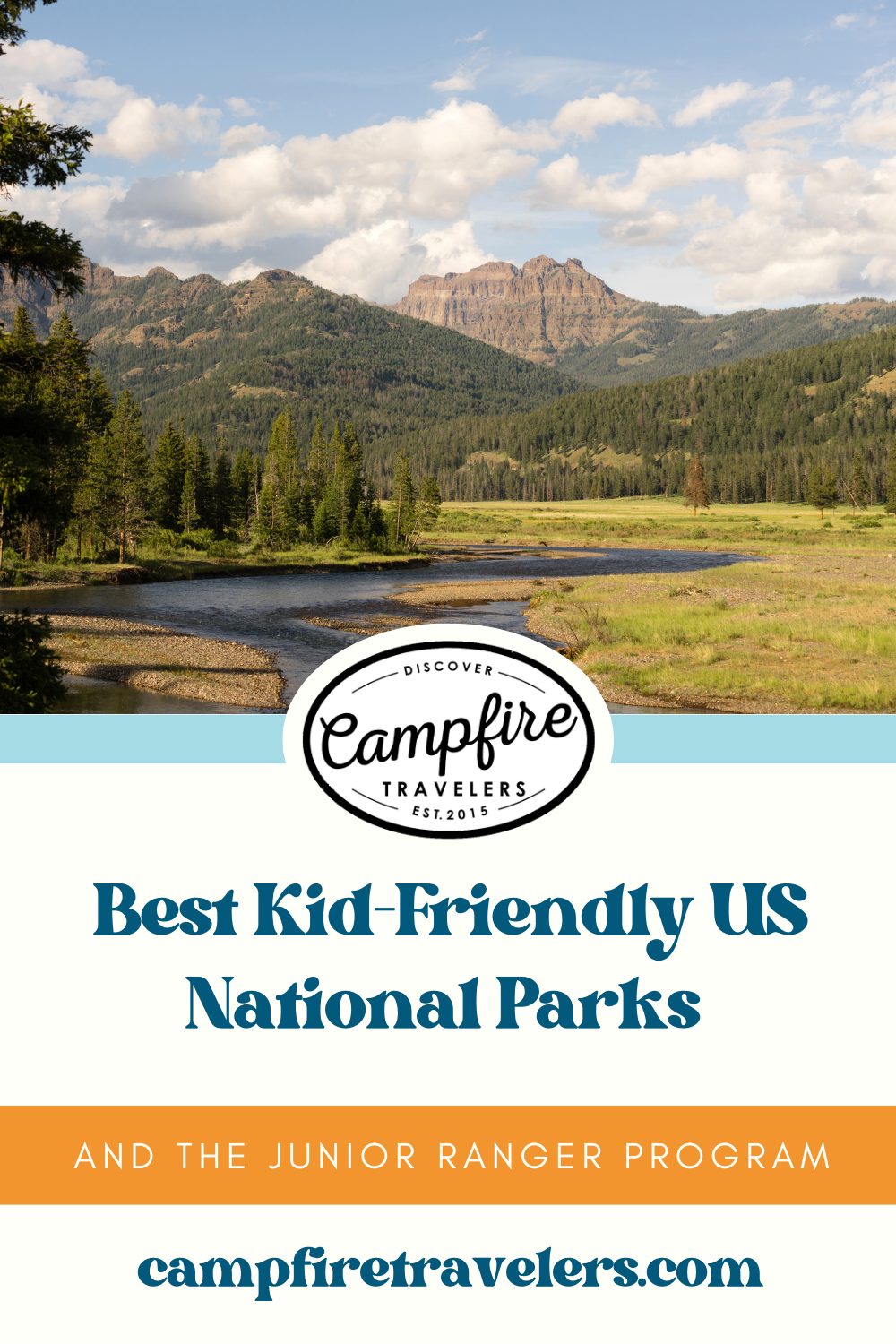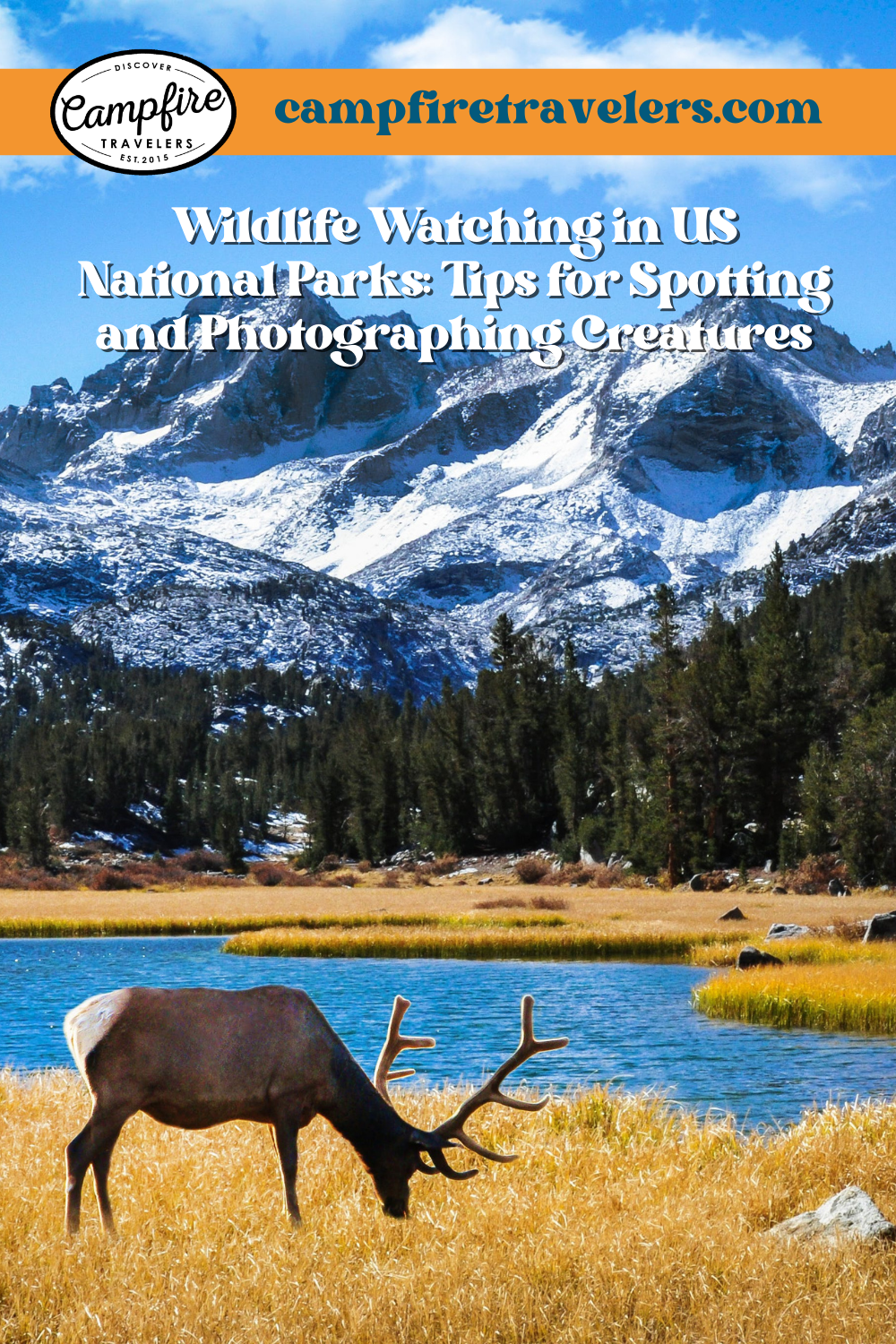Wildlife Watching in US National Parks: Tips for Spotting and Photographing Creatures
US national parks are home to an incredible array of wildlife. From grizzly bears to bison, elk to eagles, these parks offer visitors the chance to see animals up close in their natural habitats. Whether you're an avid wildlife watcher or just hoping to catch a glimpse of some creatures during your visit, there are plenty of ways to increase your chances of spotting and photographing these magnificent animals.
In this blog post, we'll provide some tips and tricks for wildlife watching in US national parks. We'll cover everything from the best times to visit for an optimal wildlife viewing to the gear you'll need to capture the perfect shot. So, grab your binoculars and camera, and get ready to embark on an unforgettable wildlife adventure!
Best Times to Visit for Wildlife Viewing
The best time to visit a national park for wildlife viewing depends on the species you're hoping to see. However, in general, the early morning and late evening are the best times to spot animals as they are most active during these times. Additionally, certain seasons may be better for seeing certain species. For example, if you want to see elk during their mating season, known as the rut, visit in the fall.
Another thing to keep in mind is that wildlife sightings can be unpredictable, so it's important to be patient and keep your eyes peeled. Some parks offer ranger-led wildlife watching programs, which can be a great way to learn more about the animals in the park and increase your chances of seeing them.
Gear You'll Need
If you're planning on wildlife watching in national parks, it's essential to have the right gear. Here are some items to consider packing:
Binoculars: A good pair of binoculars will help you see animals from a distance without disturbing them.
Camera: Whether you're using a smartphone or a DSLR, a camera is essential for capturing photos of the animals you see.
Telephoto lens: A telephoto lens will allow you to get close-up shots of animals from a safe distance.
Field guide: A field guide to the park's wildlife can help you identify species and learn more about their behaviors.
Hiking boots: You'll likely be doing a lot of walking or hiking, so comfortable, sturdy shoes are a must.
Clothing: Be sure to dress in layers and wear clothing that blends in with the environment to avoid disturbing the animals.
Where to Look for Wildlife
Different animals have different habitats and behaviors, so knowing where to look can greatly increase your chances of spotting them. Here are some tips for where to look for common national park animals:
Bears: Look for bear activity signs such as claw marks on trees, scat, and overturned rocks. Bears are most active in the early morning and late evening, and they tend to be found in forested areas.
Bison: These massive animals can often be found grazing in open grasslands. Look for herds or tracks in the mud.
Elk: During the rut, male elk can be seen bugling and fighting for mating rights. Look for them in meadows and grassy areas.
Eagles: Look for eagles soaring above rivers and lakes or perched in tall trees near water.
Wolves: Wolves are notoriously difficult to spot, but you may be able to hear their howls early in the morning or late at night. Look for tracks and scat.
Etiquette for Wildlife Watching
When observing wildlife in national parks, it's important to do so in a way that doesn't disturb or harm the animals. Here are some basic rules to follow:
Keep a safe distance: It'schanges in their natural behaviors. It's important to respect the wildlife's space and not interfere with their daily lives. Never approach or disturb nesting areas, dens, or other areas where wildlife may be resting or caring for their young. If you're unsure of the appropriate distance, a good rule of thumb is to stay at least 100 yards away from bears and wolves, and 25 yards away from all other wildlife.
Follow Park Regulations: Each national park has its own rules and regulations for wildlife watching. It's essential to follow these regulations to protect both the wildlife and the visitors. Some parks may require permits or specific guidelines for certain types of wildlife watching. Be sure to check with the park rangers or visitor center to learn about any specific regulations.
Practice Responsible Photography: Wildlife photography is a popular activity in national parks, but it's important to practice responsible photography. Always use a telephoto lens or binoculars to get close-up shots of wildlife, and never disturb their natural behavior for a better shot. Be patient and wait for the animals to come to you, and avoid using flash photography as it can be harmful to the animals' eyesight.
Leave No Trace: As with any outdoor activity, it's important to practice Leave No Trace principles. Pack out all trash and dispose of it properly, including food scraps and other waste. Stay on designated trails and avoid trampling on vegetation or disturbing the wildlife's habitat.
By following these etiquette tips, you can enjoy wildlife watching while protecting the animals and their habitat. Remember to always respect the wildlife and the park regulations to ensure that future generations can enjoy these beautiful creatures in their natural environment.
National parks are home to a wide variety of wildlife, from bears and bison to elk and eagles. With these tips, you'll be able to spot and photograph these amazing creatures while also protecting their natural habitats. So, pack your bags, grab your camera, and head to a national park for an unforgettable wildlife watching experience.
Bring Along GyPSy Guide On Your Next National Park Trip!
A GyPSy Guide tour is the perfect choice for any national parks trip because it provides a comprehensive, flexible, and cost-effective way to explore the parks. Whether you're traveling alone or with a group, a GyPSy Guide tour will enhance your experience and help you get the most out of your visit.
Self-guided audio tours: GyPSy Guide tours provide self-guided audio tours that allow visitors to explore the parks at their own pace. This means that visitors can spend as much time as they like at each location, without feeling rushed.
Comprehensive commentary: The audio tours provide a comprehensive commentary on the history, geology, and culture of the parks. This commentary is both informative and entertaining, making it ideal for visitors of all ages.
GPS-enabled app: The tours are GPS-enabled, which means that visitors don't have to worry about getting lost or missing important locations. The app provides turn-by-turn directions, ensuring that visitors can navigate the parks with ease.
Flexibility and customization: Visitors can customize their tours to suit their interests and preferences. The app provides suggestions for places to stop and explore, but visitors can choose which locations to visit and how much time to spend at each one.
Cost-effective: GyPSy Guide tours are cost-effective, as they provide a comprehensive tour at a fraction of the cost of a private tour guide. Visitors can enjoy a high-quality tour without breaking the bank.
Find a GyPSy Guide tour for places like Utah’s Mighty 5, Yellowstone, Yosemite, Rocky Mountain, Great Smokies, and many many more!
We have loved GyPSy Guides since 2018 and look forward to using them every time we visit a new area, and now we are a GyPSy affiliate! This means when you use our links to purchase a guide we get a small commission with no extra cost to you. Thank you for using our links!
Looking for more US National Park inspiration?
SHARE with a friend!
SAVE this for later!

































